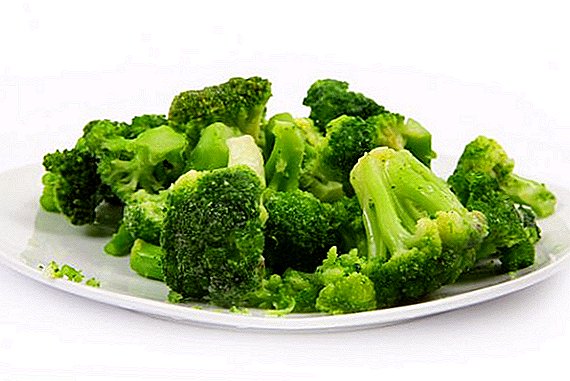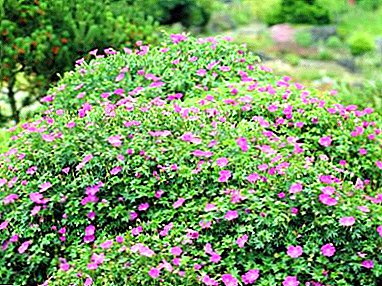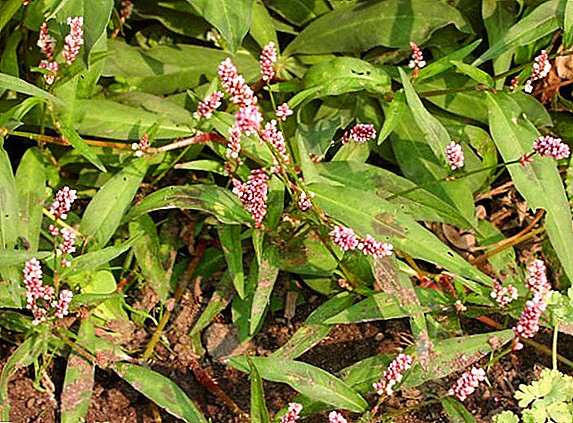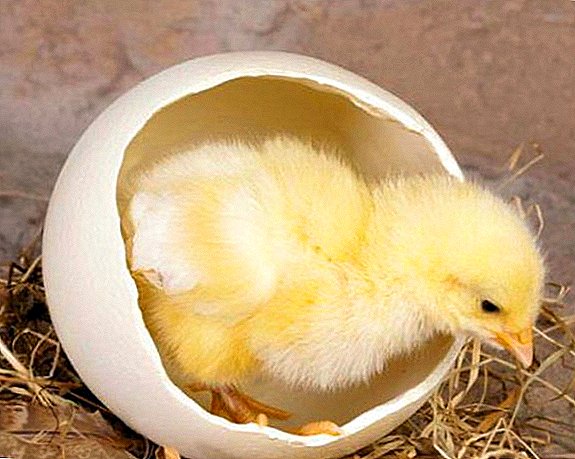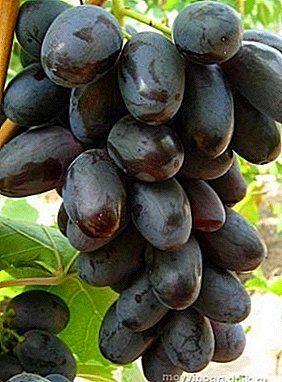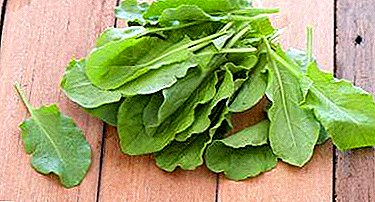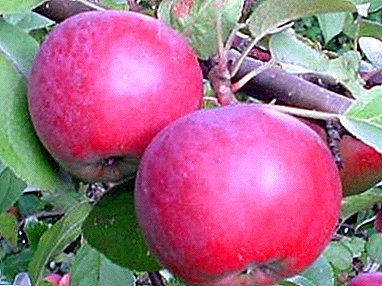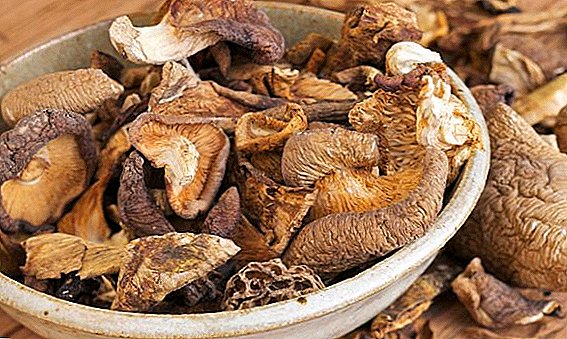 According to the season, you have the opportunity to collect a large number of mushrooms, but this product is stored very little in fresh form, so you need to either preserve it or dry it. Today we will discuss the second option, and also tell you about the main drying options and how to store dried mushrooms.
According to the season, you have the opportunity to collect a large number of mushrooms, but this product is stored very little in fresh form, so you need to either preserve it or dry it. Today we will discuss the second option, and also tell you about the main drying options and how to store dried mushrooms.
What mushrooms are suitable for drying
Before you understand all the intricacies of drying, it is worth initially to talk about which mushrooms can be dried.
It is the tubular mushrooms that should be dried, since, unlike the lamellar ones, they do not acquire bitterness in the process of drying.
The best types for drying:
- white;
- boletus;
- brownberry;
- Mohovik;
- boletus
 If you are not afraid of bitterness or know ways how to cope with it, then you can dry chanterelles, mushrooms, champignons and pottery.
If you are not afraid of bitterness or know ways how to cope with it, then you can dry chanterelles, mushrooms, champignons and pottery.The list of suitable species does not get very small, such as mice-mice. The thing is that in the process of drying the raw materials lose up to 90% of their mass. And if the raw material already weighs less than 20-30 g, then practically nothing will be left of it - it is better to preserve such species.
When going on a quiet hunt, it is important to know what benefits honey mushrooms, boletus, champignons, and milk mushrooms can bring.
Mushroom preparation
Before you begin to dry, the collected mushrooms must be prepared.
Let's make a small digression and talk about the required quality of raw materials. The fact is that if you have collected old or rotten mushrooms, then they are best cut and immediately put on cooking, rather than trying to dry. Only young mushrooms that are of good quality and are intact not suitable for drying are suitable for drying.  We return to the preparation: immediately after collecting the raw materials, we need to clean the garbage and earth, but in no case should we wash it. If moisture gets on the product, then it will dry several times longer, and the taste will deteriorate significantly.
We return to the preparation: immediately after collecting the raw materials, we need to clean the garbage and earth, but in no case should we wash it. If moisture gets on the product, then it will dry several times longer, and the taste will deteriorate significantly.
Immediately after cleaning, the mushrooms are sorted, removing rotten and pruning damaged ones.
Important! To prevent cuts on the product darken, pruning should be done with a stainless steel knife.
Drying methods
Next, let's talk about how to dry mushrooms at home. Consider all drying options that do not spoil the taste.
In the open air
The easiest drying option that does not require the use of any technology.
It should be understood that drying is carried out in the summer or at the end of spring - beginning of autumn, so that products can be dried in a relatively short time. 
- Before drying, all the mushrooms are cut into plates. You can separate the leg to dry faster.
- The plates are strung on the fishing line so that they do not touch each other, otherwise in the places of contact the raw materials will dry out badly and will not be stored. You can also use wooden trays or paper, but in this case, you need a large enough area to unfold the raw material.
- All prepared mushrooms are placed in a place where they will not get dust and rain. At the same time, the place should be well heated by the sun and well ventilated so that drying takes place faster.
- After laying out or hanging the product, cover everything with a grid with small cells so that flies do not sit down.
Did you know? Since the mushroom is considered something average between animals and plants, it can be said that this living organism is the largest creature on earth. This proves the mycelium, which was found in Oregon. Its area was 900 hectares.
In the oven
Drying mushrooms in the oven differs in that it depends on you in this case more than when drying in fresh air, so you should understand that improvisation in this case can spoil a large amount of raw materials.
The oven, which has the function of additional blowing, is best suited for drying, since without it you have to open the door so that there is at least some air circulation. In the absence of blowing the drying process will significantly slow down.
- We need to take the iron grates, which are usually used for grilling, put mushrooms on them in one layer and put them in the oven.
- Set the temperature in the region of 60-70 ° С and, if necessary, slightly open the oven door.
- Every 15-20 minutes, the grids need to be swapped so that all the mushrooms are equally well dried.
Drying is necessary until they decrease several times. At the same time to the touch, they should not be oily, namely, dry.
Important! Do not raise the temperature, otherwise you will bake the mushrooms, but not dry.
In the electric dryer
Perhaps the best quality product you get if you dry it in an electric dryer. Of course, the technique will not replace all the delights of natural drying, but you definitely cannot spoil the products in the electric dryer.
- Raw materials are cleaned and cut into thin plates. Choose your own thickness, but take into account the fact that if the product is small, then cutting it into too thin slices does not make sense.
- Everything is laid out in one layer on each tier of the dryer, the temperature is set at 55 ° C.
- We wait from 2 to 6 hours until our mushrooms are completely dried.
As a rule, absolutely all mushrooms can be dried in this way - both tubular (white mushrooms) and lamellar ones, especially in such home conditions, which make it impossible to dry products in the open air.
In the forest, you can also find inedible mushrooms - pale toadstool, false mushrooms, false chanterelles, false boletus, satanic mushrooms.
In the microwave
Consider also the option of how to dry mushrooms in the microwave.
It cannot be said that this is the optimal drying technique, however, in the absence of other options, it can also be used for our purposes.
- We clean and cut raw materials.
- Take a plate or baking tray that is suitable for a microwave. Ideally, of course, you should use a grill, but in the absence of one, you can take any non-metallic dishes.
- We put everything in a thin layer, set 100-180 W, and dry it for about 20 minutes.
- After the specified time, the microwave must be opened for 15 minutes to get all the moisture out. Then close and repeat again.
- The optimal number of repetitions is 2-3 times, but if the mushrooms are cut into thick plates, then it can be increased up to 4-5 times.

Did you know? Mushrooms, like people, can get a tan, since vitamin D is produced in their bodies. Accordingly, if sunshine is enough for the aerial parts, it will darken.
How to determine readiness
The readiness to determine is very difficult, therefore in this case only practice and experience are important.
In general, the dry product should bend well, slightly spring. At the same time to the touch it should be completely dry, wrinkled. The color should resemble a dry apple, give a dark golden color.
It is best to take dry mushrooms from friends or on the market and try them, and then, based on experience, try your product during the cooking process. Of course, this option cannot be called ideal, but it is worth understanding that there are a large number of species, so each of them will differ not only in size, but also in color, taste. For this reason, it is impossible to describe a perfectly dry product. 
How to store at home
Next, we discuss how to store dried mushrooms at home.
First, you need to store products in cardboard boxes or in bags of cotton or paper. Secondly, it should not be stored with any other products that have a strong odor, because the mushrooms begin to absorb it. Thirdly, it is important to observe low humidity so that products do not become covered with mold (no more than 70%).
Important! The room must be well ventilated.
Do not forget that these products need to be regularly sorted out in time to remove rotted or moldy.
How many are stored
In conclusion, let's talk about the shelf life of dried mushrooms.
If you listened to our advice and did everything correctly, then the products will be stored for at least 36 months, after which it is advisable to replace it with fresh one. Even if the mushrooms do not spoil, then in taste they will resemble paper rather than something edible. 
Mushrooms can also be frozen, pickled for the winter.Now you know how to properly preserve mushrooms, so that during a shortage of fresh produce you can cook a delicious soup or make a salad of soaked dry mushrooms. Follow our advice to best prepare the raw materials for further storage.


